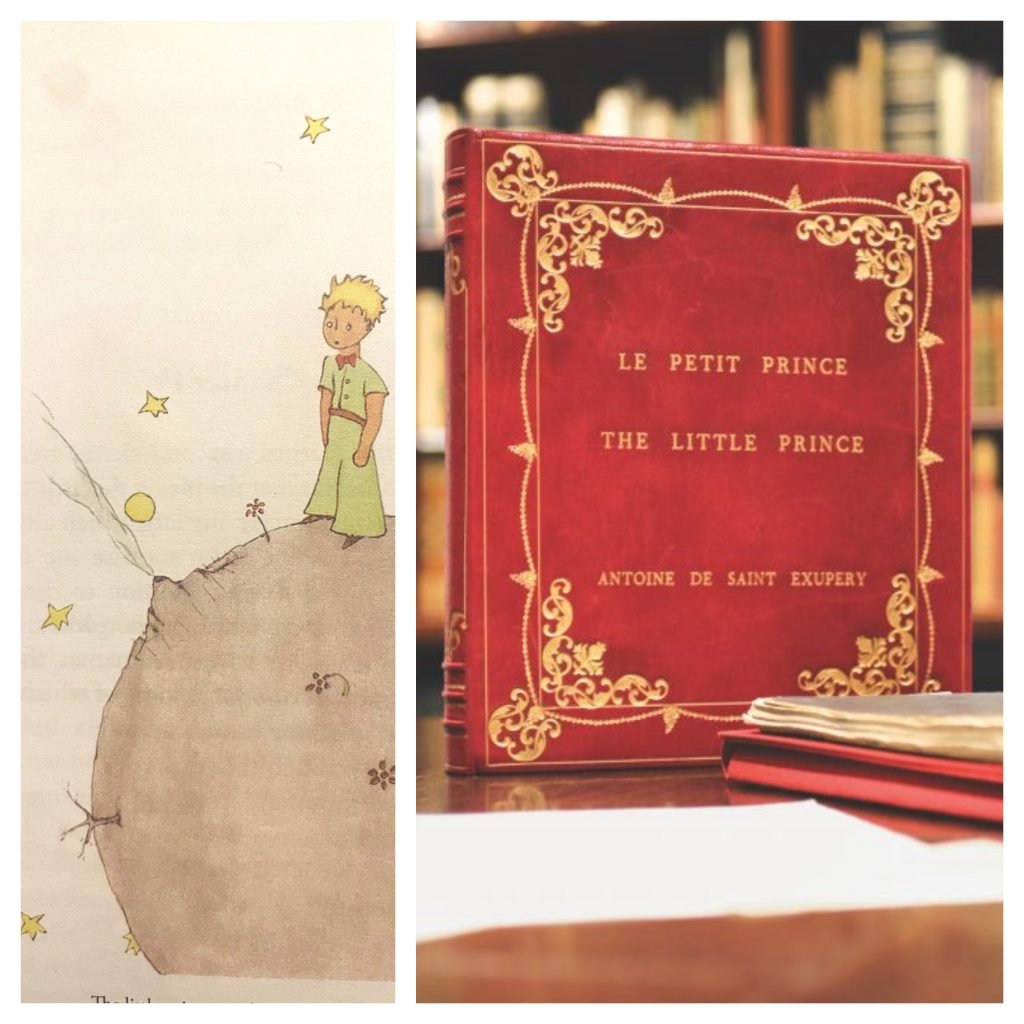Art World
A Rare, Hand-Corrected Copy of the Beloved Novella ‘Le Petit Prince’ Could Fetch $1.25 Million
The handwritten notes that appear on almost every page of Le Petit Prince offer an intimate look into Antoine de Saint-Exupéry's creative process.

After religious texts, Le Petit Prince is the most translated book in the world. The children’s classic, written by Antoine de Saint-Exupéry and first published in 1943, has sold more copies than J. R. R. Tolkien’s The Hobbit and J. K. Rowling’s Harry Potter and the Philosopher’s Stone combined. The beloved book has spawned themed cafes, immersive exhibitions, a ballet, a stage adaptation, and a theme park. An extremely rare version of the novella—a carbon typescript featuring handwritten corrections by Saint-Exupéry—is now being offered for sale by the London-based rare book dealer Peter Harrington for $1.25 million.
Only three copies of the carbon typescript—a full version of a text created using a typewriter—are known to exist, and Harrington’s is the only to ever be made available for public sale. The other two typescripts are held in the public collections of the Bibliothèque Nationale de France in Paris, and the Harry Ransom Center in Texas.

The Little Price Typescript Display (2024). Image Courtesy of Peter Harrington.
Peter Harrington will be offering the book for sale during the rare book dealer’s debut at Abu Dhabi Art 2024. The annual art fair is in its 17th year and will run from November 20 to 24 in the UAE capital. The typescript forms part of Peter Harrington’s exhibition “Between the Sand and the Stars”—an exploration of desert landscapes in rare books and manuscripts’. The desert is the central setting of Le Petit Prince, inspired by the author’s work as a pilot in the Sahara region which earned him the Légion d’honneur in 1939.
The handwritten corrections are extensive, with edits on nearly every page. Among these handwritten edits are believed to be the first written appearance of one of the most famous and reprinted lines from Le Petit Prince: “On ne voit bien qu’avec le cœur. L’essentiel est invisible pour les yeux.” (“It is only with the heart that one can see rightly; the essential is invisible to the eye). Saint-Exupéry had been workshopping this line— found on page 57—for five years. In Saint-Exupéry: A Biography (1994), author Stacy Shiff noted how the line caused Saint-Exupéry “a great deal of trouble”.

Pages and additional drawings by Antoine de Saint-Exupéry (2024). Image Courtesy of Peter Harrington.
Other handwritten notes made in the book include financial workings-out made by Saint-Exupéry on the inside covers, as well as sketched floorplans. The author also made several sketches of unidentified characters who do not appear in Le Petit Prince. One such profile appears to be titled “Maître Tanger” while another could potentially be a preliminary sketch for the character of the Vain Man who the Little Prince meets on his journey to other planets.
Also accompanying the typescript are two original pencil sketches of the title character by the author, one a preliminary sketch for the final illustration of the beloved book and the other showing the Little Prince holding a stick.

Open title page and additional drawings by Antoine de Saint-Exupéry (2024). Image Courtesy of Peter Harrington.
‘Le Petit Prince’ was written during Saint-Exupéry’s time in New York in exile from France during the Second World War. Completed before he returned to France to join the Free French forces, disappeared during a reconnaissance mission in 1944. Accompanying the manuscript is a cashed cheque for an approximation of a French air force uniform worn by Saint-Exupéry during his final visit to New York and his lover Silvia Reinhardt in Park Avenue before returning to the battle ground. Reinhardt —a writer and actress who served as inspiration for the character of the Fox in the novella—was given the original hand-written Le Petit Prince manuscript on this occasion, which is has been held in the collection of the Morgan Library since 1968.
Sammy Jay, Peter Harrington Rare Books’ Senior Literary Specialist told Artnet News: “I can say, without reservation, that this is the most exciting, most valuable, and most significant literary document with which I have had the privilege to be involved. It witnesses a crucial stage in the creative genesis of a story that is now, over 80 years since its publication, a global phenomenon. To be able to get this close to Saint-Exupery’s creative process is simply thrilling, moving even. The fact that the only other surviving manuscript and typescript versions are already secured as the national treasures of major museums in France and America emphasize both the deep significance of this treasure, and its extreme rarity as an opportunity to handle and possess outside such confines.”





